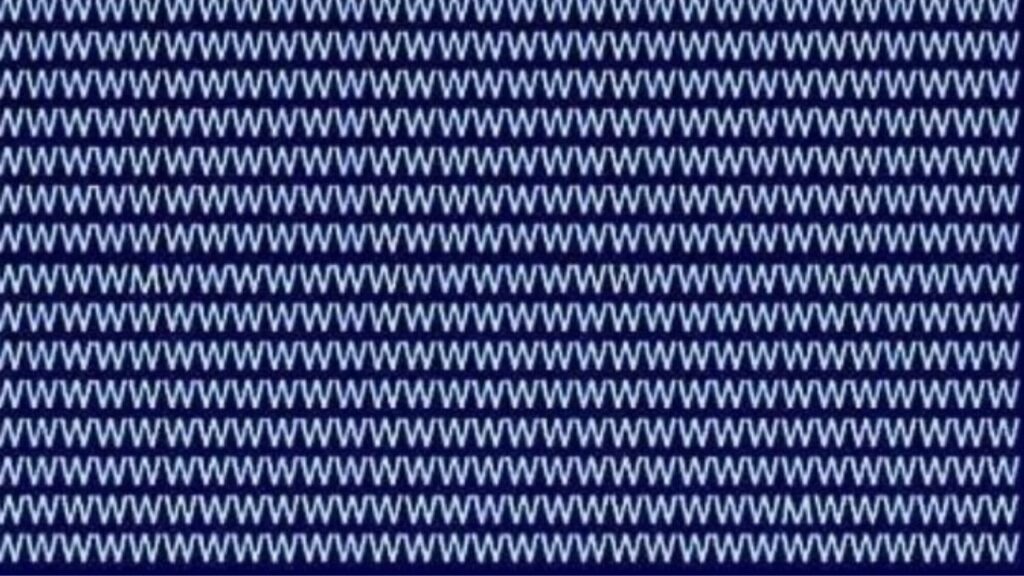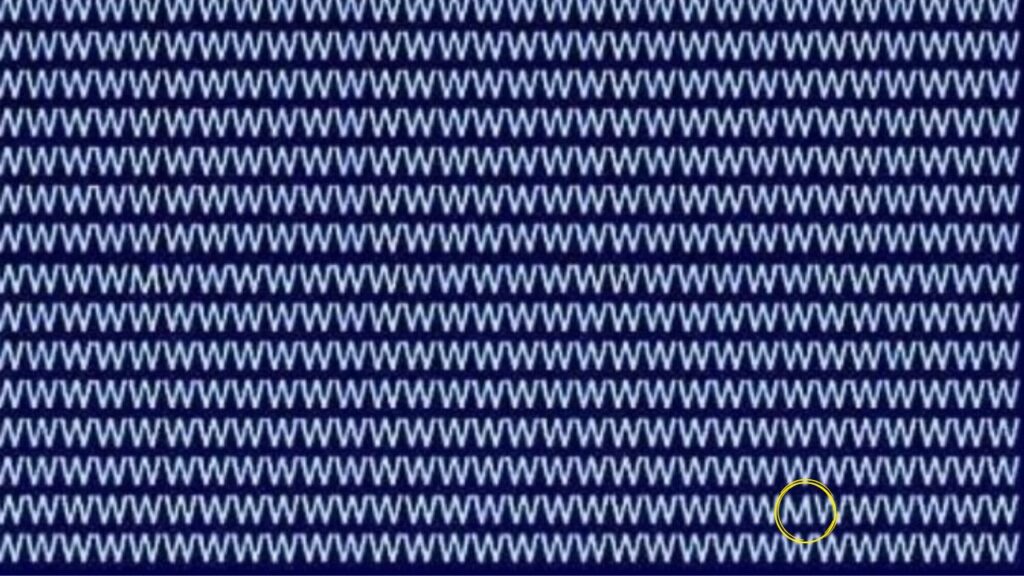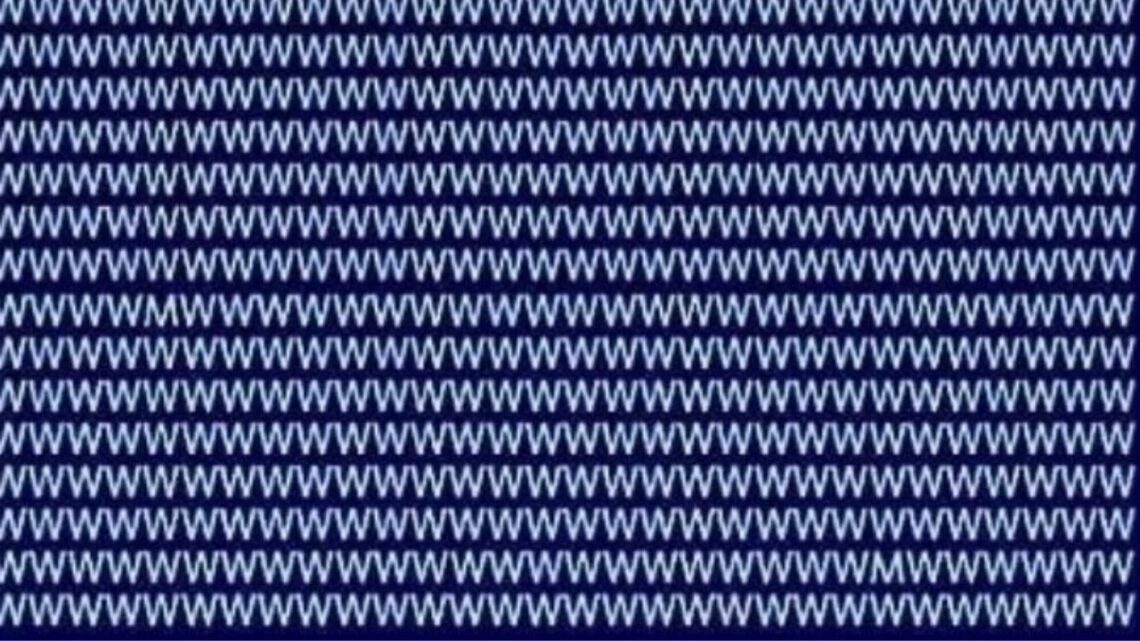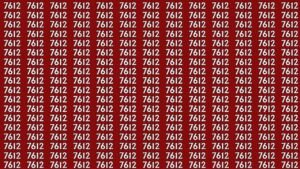A freshly trending optical illusion is putting everyone’s visual acuity to the test: a dense grid of W’s hides a single letter M, and you’ve got 15 seconds to find it.
The puzzle looks simple, but the near-identical strokes of M and W trick your brain into grouping everything as one repeating pattern.
That’s why many people scan right past the odd letter on the first try.
Why This Puzzle Feels So Hard
Your brain loves shortcuts. It clusters similar shapes to speed up pattern recognition, which is useful in daily life but frustrating in hidden-object or odd-one-out tasks.
Because M and W share angled strokes, your visual system treats them as twins until you deliberately look for the upward middle peak of M (versus the downward dip of W).
The result: a fun but demanding attention-to-detail test—especially under a strict 15-second time limit.
How To Beat The Clock In 3 Steps

- Scan Methodically: Sweep row by row, then column by column. A fixed path prevents your eyes from skipping sections.
- Search For The Upward Peak: M has its middle peak pointing up; W dips down. Train your eyes to catch that single upward point among downward shapes.
- Use Micro-Focus: Instead of staring at the full grid, move your gaze in small “windows” to catch subtle angle changes quickly.
Challenge Snapshot (At A Glance)
| Item | Details |
|---|---|
| Core Task | Find the letter M hidden among a field of W’s |
| Time Limit | 15 seconds |
| Primary Skills | Pattern recognition, visual discrimination, focus under time pressure |
| Best Strategy | Row/column scanning + look for the upward middle peak of M |
| Common Mistake | Random eye jumps that miss cells and waste precious seconds |
| Pro Tip | Break the grid into 3–4 mini-zones and clear each zone before moving on |
Pro Tips To Improve Your Odds
- Warm-Up Your Focus: Do a quick 5–10 second practice scan on any letter grid to “prime” your feature detection.
- Reduce Visual Noise: If you can, view the puzzle on a clean screen with good brightness and minimal glare—crisp edges make the M pop sooner.
- Use A Mental Metronome: Count a slow “one–two–three” per row to keep your scan steady and prevent backtracking.
Why People Love This Brainteaser
It’s a bite-sized challenge you can attempt anytime: fast, fair, and endlessly shareable.
You get an instant sense of accomplishment when your eyes lock onto the M, and it doubles as a quick workout for concentration and speed reading-style scanning.
For creators, it’s perfect: the puzzle is easy to build, hard to master, and sparks friendly competition.
Solution To The “Find The Hidden M Among W’s” Puzzle

In this visual challenge, the grid is packed with repeating W characters, but a single M is hidden among them.
The odd letter M sits in the lower-right area of the image (already circled in yellow).
A quick way to spot it is to look for the shape difference: W opens upward (two shallow “v” peaks), while M has two vertical outer strokes with a deep central v dipping downward.
Scanning for that downward v quickly reveals the hidden M.
Try A Self-Test Routine
- Round 1 (15s): Standard attempt.
- Round 2 (15s): Reverse your scan (bottom-to-top or right-to-left) to catch areas your eyes skipped.
- Round 3 (15s): Shrink or zoom the grid slightly—changing scale often reveals what you missed.
If you can spot the letter M among W’s inside 15 seconds, you’re flexing sharp visual discrimination and a disciplined search strategy.
The key is to ditch random scanning, lock into a row-and-column rhythm, and target the upward peak that gives M away.
Try a few timed rounds, refine your technique, and you’ll shave seconds off your best time. Ready to prove your focus? Set a timer and hunt that M.
FAQs
Is finding the M within 15 seconds considered good?
Yes. With a steady row/column sweep and attention to the upward middle peak, 15 seconds is a strong, achievable benchmark.
What makes this different from other letter hunts?
The M/W pair is especially deceptive because of their mirrored angles, making this a tougher odd-one-out than, say, O vs. Q or E vs. F.
How can beginners improve quickly?
Practice a systematic scan, work in small visual windows, and slightly zoom the image to sharpen edges—these tweaks often produce immediate gains.








